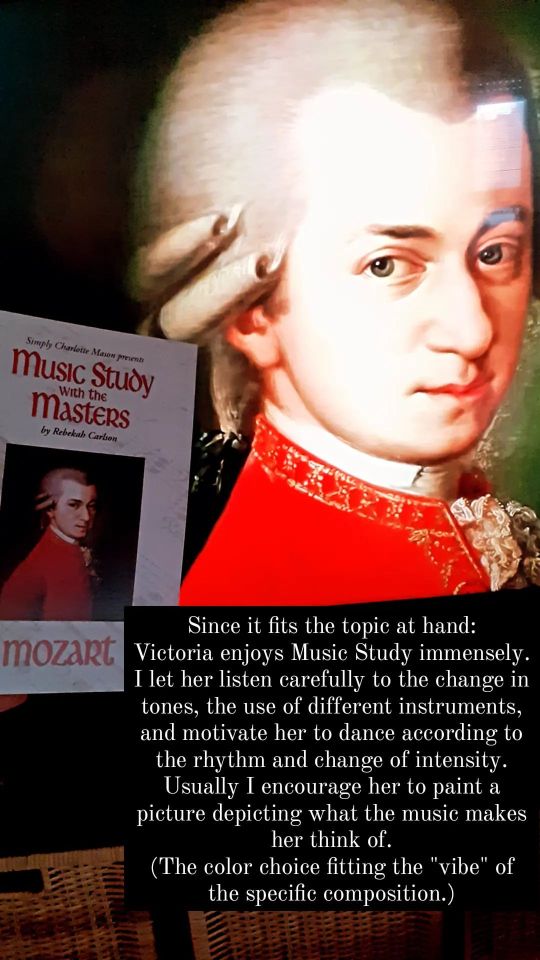#Thomas Tallis
Photo










♰ The Tudors Meme ♰
Seven Characters >> 7/7: THOMAS WYATT
#the tudors#thetudorsedit#perioddramaedit#jamie thomas king#Joe Van-Moyland#Padraic Delaney#Thomas Wyatt#thomas tallis#george boleyn#the tudors meme#my edits#**complete#tudorerasource#are you surprised?#woooooo complete
44 notes
·
View notes
Text
In college I sang in a classical a cappella group, took a History of Choral Music class, had fun browsing scores in the school's music library, and downloaded mp3s by this guy in Tokyo (Kuni Yoshimura) who would multitrack himself singing Renaissance church music as the "Virtual Byrd Choir." The summer after college, using my new Macbook's built-in microphone and built-in Garageband software, I recorded a few experiments of my own — Renaissance stuff, pop songs, church hymns, mashups, etc. That was 16 years ago. Every few years I'll poke my head into that folder and occasionally mess around again, but never meaningfully.
But: imagine somebody who treats it like a devotional practice, multi-tracking their voice layer upon layer over a period of decades, recording a massive work like the Tallis Spem in alium or the Bach B minor mass or the Mozart Requiem or the Rachmaninoff All-night vigil, a cathedral of sound, returning on a regular basis to tweak the EQ, to overdub a better take, or to thicken the texture, until the Garageband file is a palimpsest choir of not just one person but different versions of that person harmonizing with each other across the years, across a lifetime, continually striving to make it a little closer to perfect, closer to God, building a lifetime outsider-art labor of love like James Hampton or Henry Darger or Don Justo or Leonard Knight.
That would be something.
#music#devotional practice#outsider art#outsider music#art#Thomas Tallis#Johann Sebastian Bach#Wolfgang Amadeus Mozart#Sergei Rachmaninoff#Сергей Рахманинов#Garageband#home recording#overdubbing#James Hampton#Henry Darger#Don Justo#Leonard Knight#creativity#the arts#the meaning of life
9 notes
·
View notes
Text
youtube
If ye love me by Thomas Tallis (c.1505–1585), recorded at low pitch by members of The Gesualdo Six, directed by Owain Park.
10 notes
·
View notes
Text


#homeschooling#music study#music#composition#composers#beethoven#bach#mozart#tchaikovsky#thomas tallis#recommendations#learning#knowledge#haydn#wagner#debussy#chopin#classical music#beauty#art#study#teaching#motherhood#tradwife#catholic
2 notes
·
View notes
Text

The Hilliard Ensemble
Early Music (ECM):
· Playlist
Thomas Tallis · Perotin · Carlo Gesualdo · Walter Frye · Orlande de Lassus · Guillaume de Machaut · Nicolas Gombert, etc.
#The Hilliard Ensemble#thomas tallis#carlo gesualdo#walter frye#orlande de lassus#guillaume de machaut#nicolas gombert#medieval music#renaissance music#early music
4 notes
·
View notes
Video
youtube
Audivi Vocem (Thomas Tallis, c.1505 - 1585) - New York Polyphony
OK, so now I’m spamming all my followers with music that I love... Between 3:08 and 3:11 always sends shivers up my spine.
2 notes
·
View notes
Text
This came up next after the thing I was looking for. So good. I used to LOVE singing this kind of music when I was young. It's so much fun to sing.
youtube
1 note
·
View note
Text
i personally dont see what it is about 'if ye love me' which makes it by far the most well known piece by tallis.
i mean its good, but he did other things too. his organ versets for veni redemptor gentium are amazing imo and remain my favourite of his works.
2 notes
·
View notes
Text
Per crucem et sanguinem
Per crucem et sanguinem
Thomas Tallis (c1505 - 23 novembre 1585): Salvator mundi, mottetto a 5 voci (pubblicato in Cantiones quae ab argumento sacrae vocantur, 1575, n. 1). The Sixteen, dir. Harry Christophers.
Salvator mundi, salva nos,
qui per crucem et sanguinem redemisti nos,
auxiliare nobis te deprecamur, Deus noster.
youtube
View On WordPress
7 notes
·
View notes
Text
Thomas Tallis (c.1510--1585)
3 notes
·
View notes
Text
Vox Satanae - Episode #560: Yule 2022 - IV, 14th-21st Centuries - Week of December 19, 2022
Vox Satanae – Episode #560: Yule 2022 – IV, 14th-21st Centuries – Week of December 19, 2022
Vox Satanae – Episode #560
Yule 2022 – IV
14th-21st Centuries
We hear anonymous and traditional works and works by Thomas Tallis, Jacobus Vaet, Michael Praetorius, Alessandro Scarlatti, Christoph Weyse, Heinrich Kaminski, Hugh Martin, Ralph Blane, Irving Berlin, Mel Tormé, Myroslav Skoryk, Franz Gruber, Sir John Tavener, John Rutter, and Peter Warlock.
167 Minutes – Week of 2022 December…

View On WordPress
#alessandro scarlatti#Christoph Weyse#classical instrumental music#classical music#classical vocal music#Franz Gruber#Heinrich Kaminski#Hugh Martin#Irving Berlin#Jacobus Vaet#john rutter#magister gene#Mel Tormé#michael praetorius#Myroslav Skoryk#Peter Warlock#radio free satan#Ralph Blane#Sir John Tavener#Thomas Tallis#vox satanae
3 notes
·
View notes
Text
Of Judith
cw: violence, gore, Christianity
A little preamble to the story (there's a story) (I wrote it) (it's farther down, feel free to skip this bit).
I have been listening to Spem in alium by Thomas Tallis a great deal recently. If you don't know the piece, it is, in my opinion, one of the most beautiful pieces of music ever written, a motet meant to be sung by forty voices, I think it's supposed to be eight groups of five voices, positioned around the church. The music swells and swirls and draws itself up and... well, maybe you want to check it out.
Tallis Scholars - Spem in alium
It was sung by Judith, according to the Apocrypha, after she had slain the Assyrian general Holofernes. She presented herself to him, got him drunk; after he passed out, she decapitated him. There are many many paintings of the act, some quite beautiful, others terrifying. Afterwards, according to the deuterocanonical Book of Judith, she sang this hymn:
I have never put my hope
in any other but in You, God of Israel,
who will be angry and yet become again gracious,
and who forgives all the sins of man in suffering.
Lord God, Creator of heaven and earth,
look upon our lowliness.
Every time you think it couldn't get any more beautiful, it stops, breathes, and becomes even more beautiful.
I collect versions of this hymn, I imagine Judith bearing the head of Holofernes like a lantern, walking home, singing.
Of course, being size trash, I literalized Judith's powerlessness. I made her small. I made the story fractured (violence fractures, ecstasy fractures), in many voices, although the main voice is that of her handmaiden. 'Handmaiden' is here literalized as well. There are academic voices, religious voices, the voices of those who were there to hear Tallis present his motet to the Queen. All of them bear equal weight. But still, in the end, the voice is Judith's. Still, in the end, she opens her mouth and sings.
Of Judith
THE DUKE OF ____, bearinge à great love to Musicke asked whether none of our English men could sett as good à songe, and Tallice beeinge very skilfull was felt to try whether he would undertake ye matter, wch he did & made one of 40 p[ar]tes wch was songe in the longe gallery at Arundell house…
She is small, and she is cutting off his head in slow motion.
The authenticity and the canonicity of the Book of Judith are strongly contested.
I am her handmaiden. She is the size of my hand spread out. And this much is true.
10:3 And she washed her body, and anointed herself with the best ointment, and plaited the hair of her head, and put a bonnet upon her head, and clothed herself with the garments of her gladness, and put sandals on her feet, and took her bracelets, and lilies, and earlets, and rings, and adorned herself with all her ornaments.
It is considered by some critics to be the greatest piece of English early music.
Was she always small? Yes, she is of the tribe of the small.
13:1 And when it was grown late, his servants made haste to their lodgings, and Vagao shut the chamber doors, and went his way.
Blood in a perfect arc.
Throughout history the small stand before the kings.
Codex B or Vaticanus on the one hand, and Codex Alexandrinus with Codex Sinaticus on the other.
The kings beckoning and the small walking into their shadows.
Despite Jerome’s claim to have translated an Aramaic text, no ancient Aramaic or Hebrew manuscripts have been found.
Holofernes frozen bleeding gouts between history and teleology.
In Jdt 9:10 and again in 9:13, she petitions God for “deceitful words” that will wound those who have planned cruelties against the Jerusalem Temple and their homeland.
I have never put my hope in any other but in Thee, God of Israel.
She has stood in my shadow as well but always I stood in hers.
13:2 And they were all overcharged with wine.
She is so small she fills the room.
See: Hagiographies.
Judith walking into the shadow his shadow. She stands before his sandals in her celebration gown.
Like Jael, who drove a tent peg through the head of Sisera (Judges 4), Judith kills an enemy general.
He could burst her asunder like a grape on his tongue.
who canst show both wrath and graciousness,
She smells of sandalwood. He smells of copper. Dried blood in half moons in his fingernails. His hand slowly unfurled before her.
A gout of black blood and he sighs in accession, a matter of record.
Pope Saint Clement, who also recorded the Apostolic Constitutions, cites it in his epistle to the Corinthians.
10:9 And they that were there said, all with one voice: So be it, so be it.
Served Henry VIII, Edward VI, Mary Tudor, and Elizabeth I.
The warm dry palm, her feet barely make an impression in it as she steps on.
I stood as always waiting.
1:3 At its gates Nebuchadnezzar raised towers one hundred cubits high with foundations sixty cubits wide.
Creator of Heaven and Earth, regard our humility.
Beginning with a single voice from the first choir, other voices join in imitation, each in turn falling silent as the music moves around the eight choirs.
As you know, I belong to my Lord.
Holofernes smiling like an open wound.
10:18 And his officers said to him: Who can despise the people of the Hebrews who have such beautiful women, that we should not think it worth our while for their sakes to fight against them?
In Gentileschi’s treatment I am businesslike. In Caravaggio’s, I am so old and grim.
Here the word “lord” has a double meaning, indicating both Holofernes and God. Much irony is evident in Judith’s conversation with Holofernes (e.g., 12:4).
11:4 And Judith said to him: Receive the words of thy handmaid, for if thou wilt follow the words of thy handmaid, the Lord will do with thee a perfect thing.
The sound of an idiot’s flute as she severs the windpipe.
Which Holofernes hears as deference to him, but Judith means as reference to God, Judith promises to tell him nothing false.
where it was part of the 2014–15 exhibition "Treasures of the British Library".
I tell you this: she is small in the Lord, but she is enough.
Judith liberated her homeland of Bethulia from Nebuchadnezzar by assassinating his general Holofernes.
11:9 And because the children of Israel know they have offended their God, thy dread is upon them.
Catherine of Aragon, Anne Boleyn, Jane Seymour, Anne of Cleves, Catherine Howard, Catherine Parr.
11:16-17 Because these things are told me by the providence of God. And because God is angry with them, I am sent to tell these very things to thee.
He lifts her up to look at her. She kneels, her head is down.
The column of the spine. In the Lord all things are possible.
The author of the Book of Judith is unknown.
As for the original text, its context of Judith slaying Holofernes and regaining her position fits with Mary's execution of the Duke of Northumberland, who had attempted to supplant her on the throne with Lady Jane Grey, rather than Tallis using it for Elizabeth.
I wrote it, I who was her handmaiden. At times, she bade me dip her tiny feet in ink and she was my quill.
12:12 Then Vagao went in to Judith, and said: Let not my good maid be afraid to go in to my lord, that she may be honoured before his face, that she may eat with him and drink wine and be merry.
In Klimt’s treatment I am not there at all.
The whites of his eyes showing.
12:13 And Judith answered him: Who am I, that I should gainsay my Lord?
The final corded muscle. Holofernes seeming to nod.
after which the choirs sing in antiphonal pairs, throwing the sound across the space between them.
All of the treatments are wrong.
She goes into the camp of the Assyrians and captivates Holofernes by her beauty, and finally takes advantage of the general's intoxication to cut off his head.
Lord God, Creator of Heaven and Earth, Regard our humility.
13:7 Saying: Strengthen me, O Lord God of Israel, and in this hour look on the works of my hands, that as thou hast promised, thou mayst raise up Jerusalem thy city: and that I may bring to pass that which I have purposed, having a belief that it might be done by thee.
I held the head of Holofernes in one hand and her in the other.
Saint Clement of Alexandria’s book IV of the Stromata, Origen’s Homily 19 on Jeremiah and vol. III on Saint John, chapter 17 of Tertullian’s On Monogamy, and book 3 of Saint Ambrose’s De Officiis and De Viduis all mention it also.
Spem in Alium in historical context: why was it written and where was it performed? Spem in Alium over the centuries: why has the work been so greatly admired, and why are we still so fascinated by it today?
She was only as big as my palm spread wide. In the book it says it took her only two blows from his sword, but it took all night to sever the head of Holofernes.
14:14 But when with hearkening, Vagao perceived no motion of one lying, he came near to the curtain, and lifting it up, and seeing the body of Holofernes, lying upon the ground, without the head, sweltering in his blood, he cried out with a loud voice, with weeping, and rent his garments.
And I was not old, nor was I grim.
Final cause, for the sake of, nothing in vain, complete, perfect.
I was so happy to bear her bloody frame in one hand, and his head in the other.
… wch so farre surpassed ye other that the Duke, hearinge yt songe, tooke his chayne of Gold fro[m] his necke & putt yt about Tallice his necke & gave yt him.
I sang.
5 notes
·
View notes

